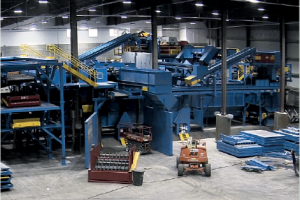
Oregon was the first state in the U.S. to implement a beverage container deposit/refund system, rolling out its program in 1972. Since then, the system has shown it can keep on a path of continuous improvement.
 The project to build a mixed-waste processing facility in Rochester, Mass. has experienced a number of setbacks, including tough market conditions and a 2016 fire in the building set to house it.
The project to build a mixed-waste processing facility in Rochester, Mass. has experienced a number of setbacks, including tough market conditions and a 2016 fire in the building set to house it.
